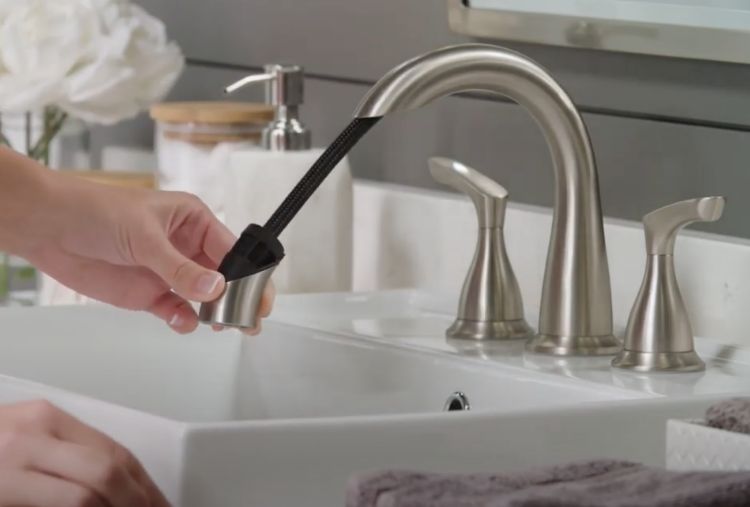What are your thoughts and feelings about Leaky Faucets: Why They Happen & What to Do About Them?

Leaking faucets might feel like a small hassle, but their effect goes beyond simply the inconvenience of the audio. From drainage to incurring unnecessary monetary costs and health dangers, neglecting a trickling tap can result in various effects. In this post, we'll delve into why it's crucial to address this typical family concern promptly and successfully.
Wastage of Water
Environmental Influence
Trickling faucets add significantly to water wastage. According to the Environmental Protection Agency (EPA), a solitary faucet leaking at one drip per second can squander greater than 3,000 gallons of water per year. This not only pressures water sources yet also impacts ecosystems and wild animals dependent on them.
Step-by-Step Overview to Taking Care Of a Dripping Tap
Devices Called for
Prior to trying to deal with a leaking faucet, gather the needed tools, consisting of an adjustable wrench, screwdrivers, replacement parts (such as washing machines or cartridges), and plumber's tape.
Common Tap Issues and Their Solutions
Identify the kind of tap and the certain problem causing the drip. Usual troubles include worn-out washers, corroded shutoff seats, or defective O-rings. Describe producer instructions or on the internet tutorials for step-by-step assistance on repair work.
Financial Prices
Raised Water Expenses
Past the environmental impact, trickling taps can inflate water expenses significantly. The built up wastefulness with time converts into higher energy expenses, which could have been stayed clear of with timely repairs.
Potential Home Damage
Furthermore, prolonged leaking can lead to harm to components and surfaces bordering the faucet. Water buildup can trigger discoloration, rust, and also structural concerns if left ignored, resulting in added repair service costs.
Health and wellness Concerns
Mold And Mildew and Mold Growth
The consistent presence of wetness from a leaking faucet creates an excellent setting for mold and mildew development. These fungis not just endanger indoor air quality yet also present health threats, particularly for individuals with breathing problems or allergic reactions.
Waterborne Diseases
Stationary water in dripping taps can become a breeding ground for microorganisms and various other microorganisms, boosting the threat of waterborne diseases. Pollutants such as Legionella germs grow in stagnant water, possibly bring about serious health problems when consumed or breathed in.
Do it yourself vs. Expert Repair service
Advantages and disadvantages of Do It Yourself Repair Service
While some might try to fix a leaking faucet themselves, DIY fixings feature their own set of difficulties. Without appropriate understanding and devices, do it yourself efforts can aggravate the concern or bring about incomplete repairs, prolonging the problem.
Benefits of Hiring a Professional Plumber
Employing an expert plumber makes certain that the underlying source of the leaking faucet is dealt with efficiently. Plumbings possess the knowledge and equipment to identify and repair tap concerns effectively, conserving time and decreasing the risk of more damages.
Ecological Obligation
Individual Payment to Preservation
Taking duty for dealing with leaking faucets aligns with wider efforts towards water preservation and environmental sustainability. Every person's activities jointly make a substantial influence on preserving priceless sources.
Lasting Living Practices
By prioritizing punctual repairs and taking on water-saving routines, individuals add to sustainable living practices that profit both present and future generations.
Preventive Measures
Normal Upkeep Tips
To prevent leaking faucets, execute routine upkeep such as cleaning up aerators, evaluating for leaks, and changing worn-out components immediately. Additionally, think about installing water-saving gadgets or upgrading to a lot more efficient fixtures.
Relevance of Prompt Services
Addressing dripping faucets as quickly as they're noticed stops further water waste and possible damage, eventually conserving both water and money over time.
Influence On Residential Property Worth
Perception of Well-Maintained Building
Maintaining a property in good condition, including resolving upkeep problems like trickling faucets, boosts its perceived worth and desirability amongst prospective buyers or renters.
Influence on Resale Worth
Characteristics with well-kept plumbing fixtures, including taps, command greater resale values in the property market. Resolving dripping taps can add to a favorable perception throughout home assessments and negotiations.
Final thought
Addressing a leaking faucet surpasses mere comfort; it's a necessary step towards conserving water, reducing monetary costs, and securing health and residential property. Whether through do it yourself fixings or expert help, taking action to deal with dripping taps is a small yet impactful means to advertise responsible stewardship of resources and contribute to a much healthier, more lasting future.
Most Common Reasons for a Leaky Faucet and How to Stop the Drip
Whether it’s your kitchen faucet leaking or a bathroom faucet leaking, one leaky faucet can waste anywhere from three to 30 gallons of water every single day. If the constant drip-drip-drip doesn’t get your attention, your water bill will. The good news is that, by following a few simple steps, chances are pretty good you can fix the problem yourself.
Why is it dripping?
Before you start taking things apart, let’s break down some of the most common causes of a leaky faucet.
Bad O-ring.
A cartridge is a valve that controls the flow of water into the faucet spout. On cartridge faucets there’s an O-ring—the little disc attached to the stem screw that holds the faucet handle in place. If it’s loose or worn-out, it can cause your sink handle to leak. Of course, the cartridge itself could be worn out. If that’s the case, make sure you replace it with the exact same kind.
Corroded valve seat.
The valve seat connects the faucet and the spout. If the leak seems to be coming from the spout, it might be because a buildup of water sediment has corroded the valve seat.
Worn-out washers or seals.
A leaky spout could be caused by a bad washer that rests against the valve seat. It’s just a matter of time before friction takes its toll. It could also be the wrong size washer or one that’s been installed incorrectly. Water sediments can also corrode inlet and outlet seals.
Water pressure.
If the faucet only drips now and then, or when you turn the handles a certain way, you should probably check your home’s water pressure.
Loose or broken parts.
The adjusting ring and packing nuts in the stream screw can become loose over time, causing your sink handle to leak. Try tightening or replacing the packing nut. If the leak is coming from the pipes underneath the sink, you probably have a broken pipe or fitting. If that’s the case, you should definitely call a plumber.
Know your faucet.
Faucets come in a variety of types. Each one has its own assembly—and its own possible causes of leaks. Learning about the four most common kinds of faucets will help you know how to take them apart and make any repairs.
How to stop a leaky faucet
Fixing that leaky faucet doesn’t have to take a lot of time, money, or expertise. It’s usually a simple matter of replacing a worn-out washer or gasket, a loose O ring, or another part. Chances are really good you can do this yourself if you follow these simple steps.
Shut off the water.
Before you tackle the faucet, cut off the water supply to the sink. There should be one valve for hot and one for cold. Hand-turn them clockwise with your hands till they close. If there are no valves under the sink, head to the basement and shut off the main water supply to the house. Then turn on the faucet until it empties out the water that’s still in the line and you’re ready to start. It’s a good idea to cover the sink drain with a plug or a rag so you don’t lose any small pieces and parts while you’re working.

As an avid reader on Should I Repair or Replace a Leaky Faucet?, I figured sharing that piece of content was mandatory. So long as you appreciated our blog entry kindly don't forget to pass it around. Thanks a lot for your time spent reading it.